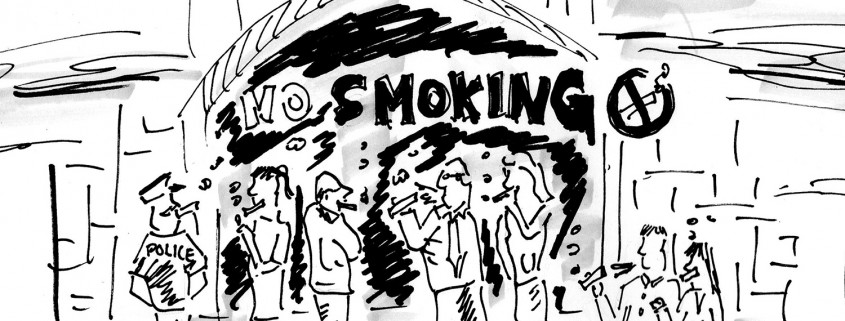Ban on smoking is ineffective, ignores international students
In a historic anti-smoking move, the California State Senate voted last Thursday to increase the smoking age to 21 and prohibit e-cigarettes from public places that ban traditional smoking. The motion to restrict the presence of smoking echoes an institutional shift toward non-smoking, especially in higher education. Earlier this month, the University of Hawai’i at Manoa joined the more than 1,500 smoke-free campuses in the United States. The latest ban on smoking shifts the conversation closer to campus, but before administrators immediately ban smoking, they must consider the ramifications to ensure that a ban would be effective.
The University’s primary problem lies with enforcement. Just as many underage students can attest that alcohol is not difficult to find on campus, USC may not be able to fully enforce a ban on smoking. Considering that the University often fails to enforce its current smoking policy on the University Park Campus — which prohibits smoking in enclosed buildings; within 10 feet of outdoor dining areas; in facilities, vehicles and “smoke-free” designated areas; and in locations during indoor events — it is fair to wonder whether a more comprehensive smoke-free policy will carry the weight it should.
Banning smoking on campus could also present practical issues. According to a study conducted by the Harvard School of Public Health earlier this month, one-third of college-age students have smoked a cigar or cigarette in the past four weeks. That means that there are over 6,000 USC undergraduates who smoke. A comprehensive smoking ban could push students off-campus and if it is late at night or they are alone, students forced to leave campus could present safety issues for the University. Additionally, residence hall smokers may be forced to smoke in their dorm rooms, which could increase secondhand smoke exposure for those in the building.
As the university with the second-largest international population in the country, USC must also realize the cultural diversity of the students it houses. For many international students who smoke, the habit stems from cultural norms in a country in which smoking may carry less of a stigma. A comprehensive smoke-free policy could make it even more difficult for these students to adjust to life in Los Angeles. By imposing more of our own Western traditions and values on international students, we fail to accommodate for students for whom smoking may be a cultural habit.
Smoking is an unhealthy habit and secondhand smoke is an unfair consequence that endangers the public health of students at USC. However, before the University jumps on the bandwagon to eagerly publicize a smoke-free campus, it must invest in research that sheds light on how a smoke-free campus could affect its students. Instead of instituting an ineffective ban that fails to account for the experiences of all students, the University first needs to better comply with existing policy and ensure that smokers light up only in smoking areas. Considering the misinformation about smoking — be it the difficulty of getting addicted or the long-term effects of tobacco use — the University could also invest more in tobacco education. USC already implements sexual assault education and alcohol education for incoming freshmen and a segment on tobacco use could easily be incorporated.
Sonali Seth is a sophomore majoring in political science and policy, planning, development. She is also the editorial director of the Daily Trojan. “Point/Counterpoint” runs Tuesdays.


There are areas on campus to smoke. They should keep those areas.
This article is right to question the implementation of a smoking ban however it is wrong in blindly stating that second hand smoke poses a health risk to others. A large number of studies show that second hand smoke is not a significant health risk to others indoors or out.
Consider for example: James E, Kabat Geoffrey C, Smith Davey. Environmental tobacco smoke and tobacco related mortality in a prospective study of Californians, 1960-98 BMJ 2003; 326:1057. This study found “No significant associations were found for current or former exposure to environmental tobacco smoke before or after adjusting for seven confounders and before or after excluding participants with pre-existing disease. No significant associations were found during the shorter follow up periods of 1960-5, 1966-72, 1973-85, and 1973-98.” Conclusions: The results do not support a causal relation between environmental tobacco smoke and tobacco related mortality, although they do not rule out a small effect. The association between exposure to environmental tobacco smoke and coronary heart disease and lung cancer may be considerably weaker than generally believed.”